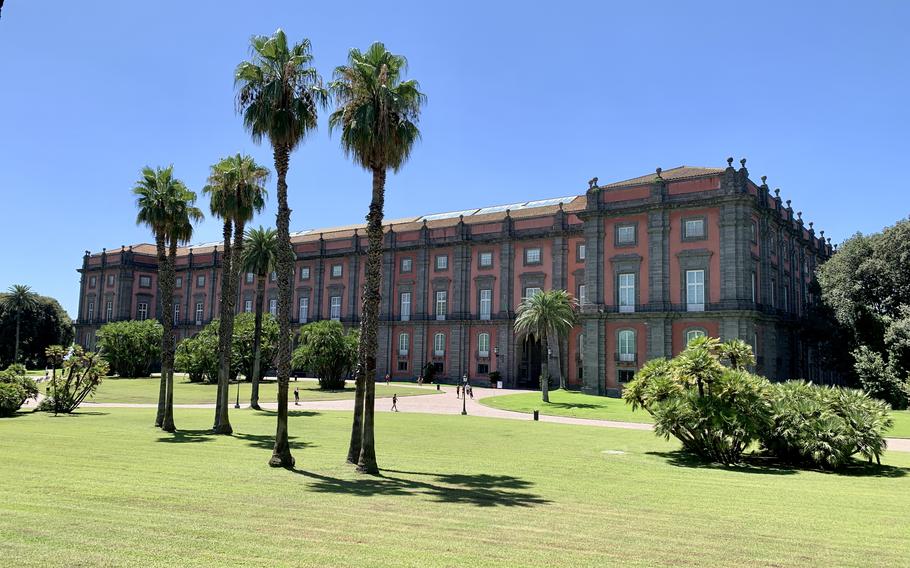
The Royal Palace of Capodimonte in Naples, Italy, houses an extensive collection of Renaissance and Baroque art, much of which is from the famed Farnese Collection. (Alison Bath/Stars and Stripes)
The Museo e Real Bosco di Capodimonte in Naples, Italy, is the getaway that doesn’t require going away.
Once a palace and hunting grounds for King Charles VII of Naples and Sicily, the public venue features a museum boasting works from celebrated Italian artists such as Caravaggio, Raphael and Artemisia Gentileschi.
It also has more than 331,000 acres of woodland, open space, picnic areas and paved walkways and trails. Two cafes offer food and beverages.
It’s all situated practically in the heart of Naples, so there’s no need to travel far to take in Italian culture and feel a world away from the chaotic din of the city.
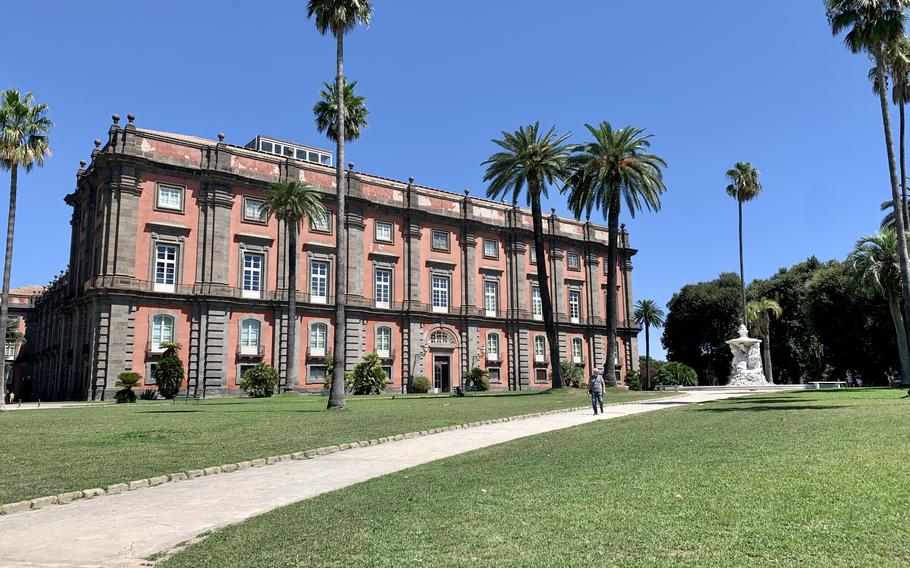
The Royal Palace of Capodimonte was originally intended to be a hunting lodge for King Charles VII of Naples and Sicily. He later decided to make it a palace. Construction began in 1738 and was completed in 1742. (Alison Bath/Stars and Stripes)
A few steps beyond the Porta Grande’s entrance is the three-story Royal Palace of Capodimonte, which was completed in 1742.
Originally intended as a hunting lodge at the top of the mountain, or Capodimonte as the phrase is rendered in Italian, the palace overlooks the city and Bay of Naples.
A left turn at the entrance gate provides those views. The route straight ahead, on a wide, paved pathway flanked by expansive lawns and gardens, leads to the palace and, ultimately, to the Real Bosco, meaning royal forest.
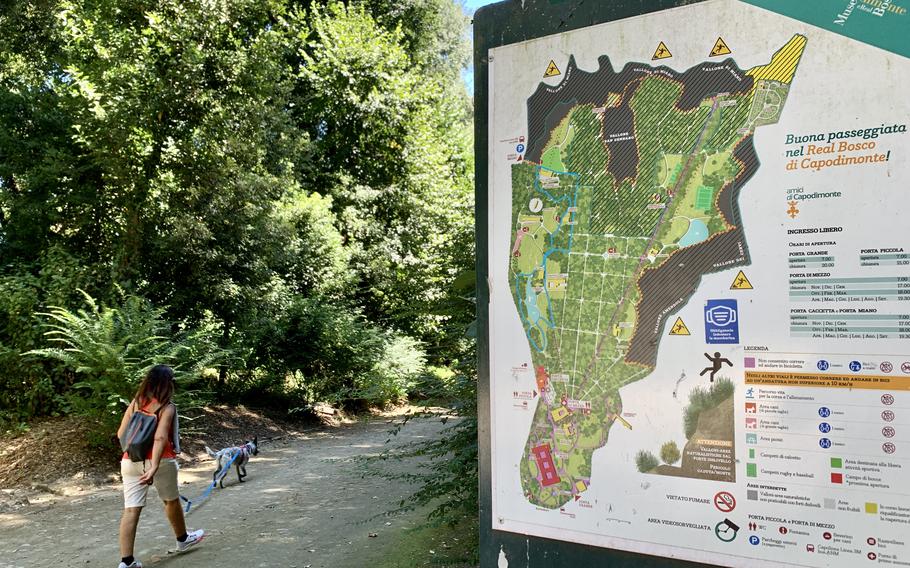
Real Bosco di Capodimonte spans more than 331,000 acres and includes hundreds of species of plants, including cypresses and magnolias from the Americas. Maps throughout the park help keep visitors oriented. (Alison Bath/Stars and Stripes)
The palace has an area of more than 150,000 square feet. Its 124 galleries are home to an extensive Italian Renaissance and Baroque art collection, including works by Michelangelo, Botticelli and Masaccio, according to the official website.
Among the paintings housed there are Caravaggio’s famed “Flagellation of Christ,” which is now on loan to the Louvre, as well as Parmigianino’s “Lucretia” and Raphael’s “Portrait of Cardinal Alessandro Farnese.”
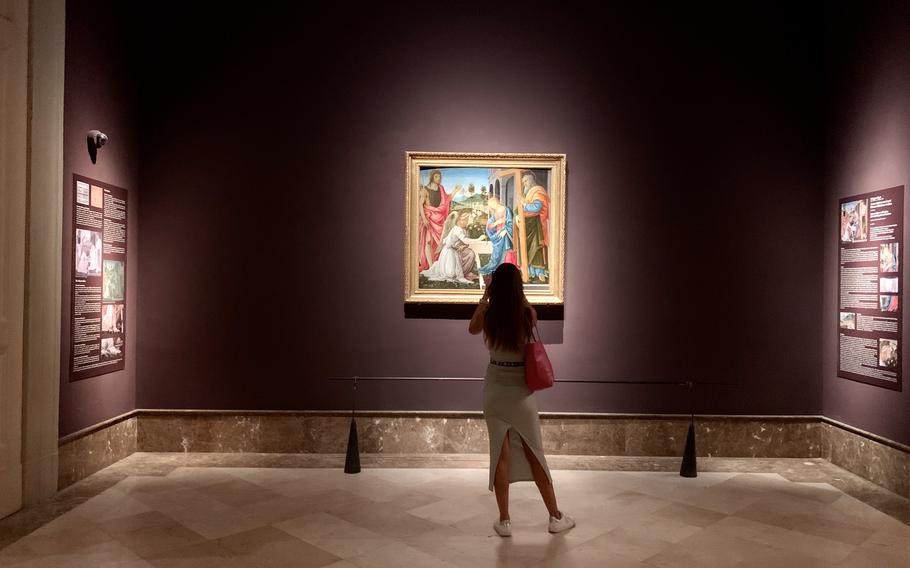
Museo e Real Bosco di Capodimonte in Naples, Italy, includes a museum offering an extensive collection of Renaissance and Baroque art, including works by Caravaggio, Raphael and Artemisia Gentileschi. (Alison Bath/Stars and Stripes)
One of my favorites is “The Blind Leading the Blind” by Pieter Bruegel the Elder. It depicts several men, all with some sort of eye condition, blindly following each other into a mishap.
It’s a social commentary related to the biblical parable about people following advice from others who aren’t any better-informed.
The backbone of the museum’s offerings is the Farnese Collection, inherited by King Charles from his mother Elisabeth Farnese. Most of the collection’s paintings are housed at Capodimonte, while many of its classical sculptures are displayed at the National Archaeological Museum of Naples.
Also on display are the family’s armory and a large collection of Capodimonte porcelain, which is famed for its artistry and representation of Neapolitan culture and was at one time produced at the royal factory on palace grounds.

Visitors to the Royal Palace of Capodimonte in Naples, Italy, can see the Royal Apartment. This room, the Salone della Culla or cradle room, features a marble floor from an imperial villa in Capri. (Alison Bath/Stars and Stripes)
Visitors also can see the Royal Apartment, including the Salone della Culla, or cradle room. The room previously held the crib given to the Savoys by the people of Naples for Vittorio Emanuele III born in 1869, according to vesuviolive.it. The room also includes a marble floor from an imperial villa in Capri, the website says.
A left turn after exiting on the eastern side of the museum takes visitors on a short walk to the Porta di Mezzo, the main entrance to the gardens and forest. From here, five boulevards lead into the park grounds.
For the porcelain factory and the Church of San Gennaro, also known as St. Januarius, the boulevard farthest to the right is the way to go. The factory’s yellow stucco facade is visible in the distance.
Now housing the state professional institute for industry and handicraft, the factory is among 17 historic buildings on the grounds.
They include the church, not currently open to visitors, and a pheasantry formerly used for the hatching and shelter of Chinese and American pheasants and peacocks, according to the official website, which has a guide to the buildings.
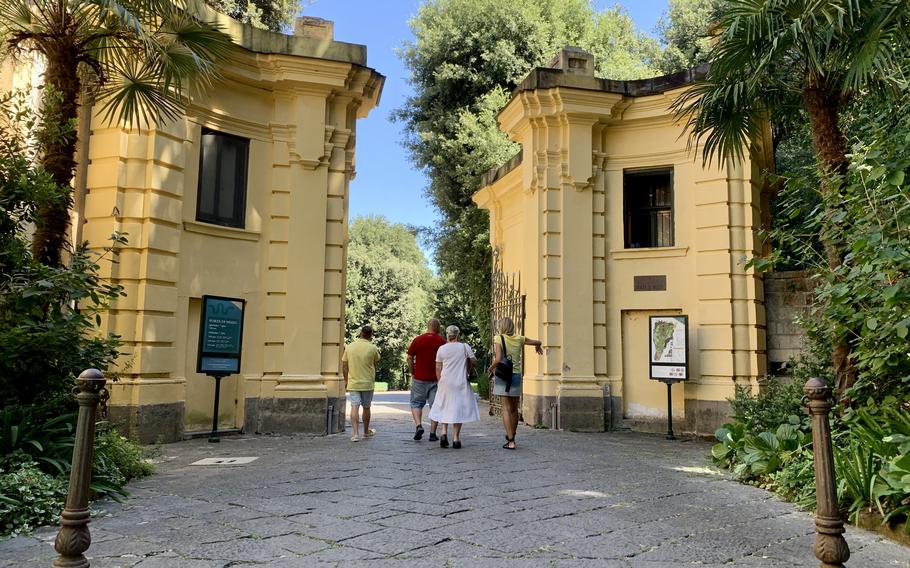
Porta di Mezzo at Real Bosco di Capodimonte leads visitors into the park's vast gardens, walkways, trails, picnic spots and historical buildings. (Alison Bath/Stars and Stripes)
The park, designed in 1734 by Ferdinando Sanfelice, is divided into four main sections: landscaped gardens near the palace, and Anglo-Chinese, Baroque and pastoral landscape gardens.
More than 400 plant species fill the gardens, including camphor and camellias from Asia, magnolias and cypresses from the Americas and Australian eucalyptus, the website states.
While there are paved pathways, the park has plenty of unpaved trails to explore and is an ideal spot for jogging or taking the kids to burn off some energy.
Dog walkers also will find it a welcoming place, but visitors should check the park rules beforehand. Maps posted throughout the grounds help keep visitors oriented.
One trip to Museo e Real Bosco di Capodimonte won’t be enough to take in all that it offers. Fortunately, its convenient location makes it an ideal place to return time and again to get away from it all.
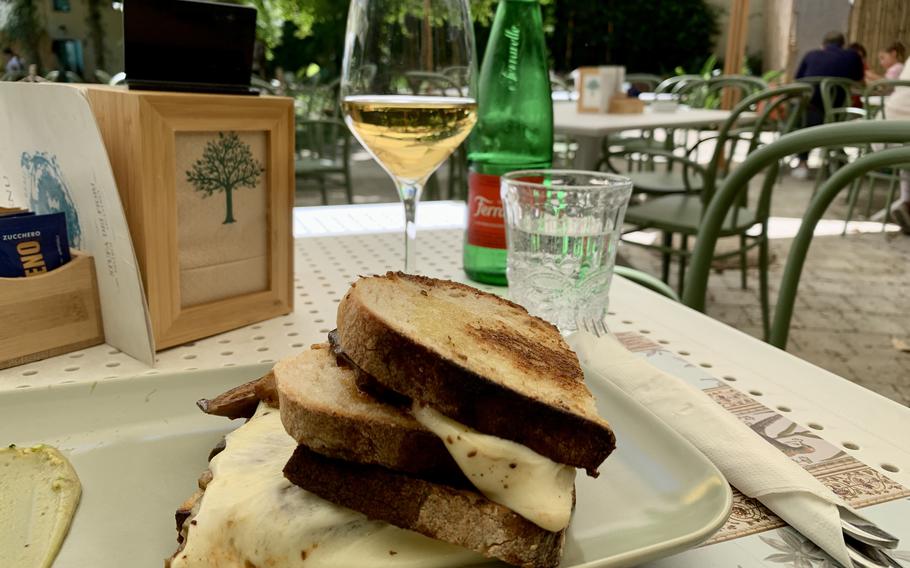
Museo e Real Bosco di Capodimonte includes two cafes serving drinks, pastries and lunch fare. (Alison Bath/Stars and Stripes)
Address: Via Miano, 2, Naples
Cost: Entrance to the museum is 15 euros for adults; free for children under 18; 3 euros for European Union citizens ages 18-25 and Italian citizens residing abroad (2 euros after Sept. 15, 2023). Entrance to the park is free.
Hours: The museum is open Thursday-Tuesday, 8:30 a.m.-7:30 p.m. (galleries begin closing at 7 p.m.); closed on Wednesday and Christmas Day. The park is open April-September, 7 a.m.-7:30 p.m.; October, February and March, 7 a.m.-6 p.m.; and November-January, 7 a.m.-5 p.m.
Information: Online: capodimonte.cultura.gov.it